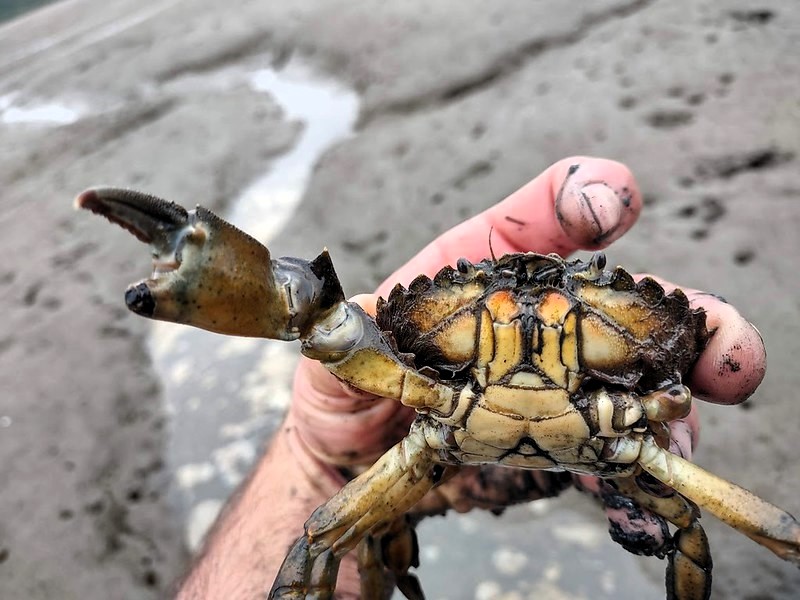
Invasive species are more prevalent in Alaska than you might think. This week (November 7-9), a group of scientists, scholars, and interested members of the public are meeting in Sitka to cover a five-page agenda of some of the state’s most troubling species.
The Alaska Invasive Species Partnership is a completely ad-hoc gathering. There are representatives from state and federal agencies, tribal governments, and universities, but the consortium officially belongs to none of them. Their common interest is preserving Alaska’s native species.
Tammy Davis is the Invasive Species Program Coordinator for the Alaska Department of Fish & Game, who’s been in Sitka often in recent years, working on an eradication project of the invasive tunicate D. vex in Whiting Harbor. Gino Graziano is with the University of Alaska Fairbanks Cooperative Extension Service.
The pair spoke with KCAW’s Robert Woolsey about this week’s workshop in Sitka.
Note: There is a public presentation at 7 p.m. tonight (11-6-23) at Harrigan Centennial Hall on ocean warming and its impact on Alaska’s coastal species, by University of California professor Cascade Sorte.
Graziano: It started as a group focused primarily on invasive plants under the name Committee of Noxious and Invasive Plant Management, and it was really brought about by a bunch of farmers in the interior part of the state wanting to work more on weed management issues with the BLM and Department of Transportation and some others, and then it really kind of just spread statewide because it’s it’s not a single issue for one part of the state.
KCAW: So you’ve incorporated marine invasives now into the terrestrial program. What rises to top the list of the Invasive Species Partnerships priorities? Why are the things that are here on it (the agenda)? Are these just the main focus of interest of the people who are coming, or are these the the invasives of highest concern and Alaska right now?
Graziano: It’s a little bit of both because a lot of the people coming are also Southeast Alaska folks. So we we rotate around the state and then try to get to places that are off of the road system, meaning not Fairbanks or Anchorage, and address some of those concerns. And so there’s a complex of knotweed species that are a common invasive plant and a big issue in Southeast Alaska, and John Hudson and several others are going to be talking about it, as well as a speaker from Oregon State University talking about possibility of introducing a bio control agent to take care of those plants. And then yeah, European Green Crab is a new one on the list.
KCAW: And it is now in southern Southeast Alaska.
Davis: Yes. So far, they’ve only been confirmed from waters of Metlakatla which is the Annette Islands Reserve area. The Department of Fish and Game has done some surveys outside of that area and not found green crab thus far. That doesn’t mean they’re not there. It just means we haven’t found them.
KCAW: What is the biggest threat associated with European Green Crab?
Davis: Green crab are voracious. One four-inch wide carapace green crab can eat 20 clams in a day. And even if it isn’t clams, it’s one of the other benthic invertebrates that our groundfish, salmon, and other Dungeness crab rely on for food.
KCAW: Did green crab get here on their own? Or did they hitch a ride?
Davis: Likely, they got here by larval distribution in the ocean currents.
KCAW: I have worked with you in the past, Tammy, when you were out there in Whiting Harbor with your crew, and they really kind of enjoyed trying to kill off D. vex. There was kind of an inspired sense of camaraderie in trying all these different things. And I’m glad you have fun because there has to be a lot of things that are not fun about invasive species. I mean, you no longer get ahead of one than you hear about two more. At least that’s sort of my perception just out in the public.
Davis: I think that’s true. There are many pathways that bring invasive species and spread them around: Humans move around, and we bring the things that we like with us, intentionally or unintentionally. One of the great things about the Alaska Invasive Species Partnership is it’s no one’s job to participate in this particular group, necessarily. I mean, we all work on invasive species, but this is sort of an add-on to what we do in our day-to-day job for the different organizations that we work for. But everyone is really dedicated, and everyone is willing to give it the extra effort. Because I think we all care about the native resources that we have and we want to protect them.






























